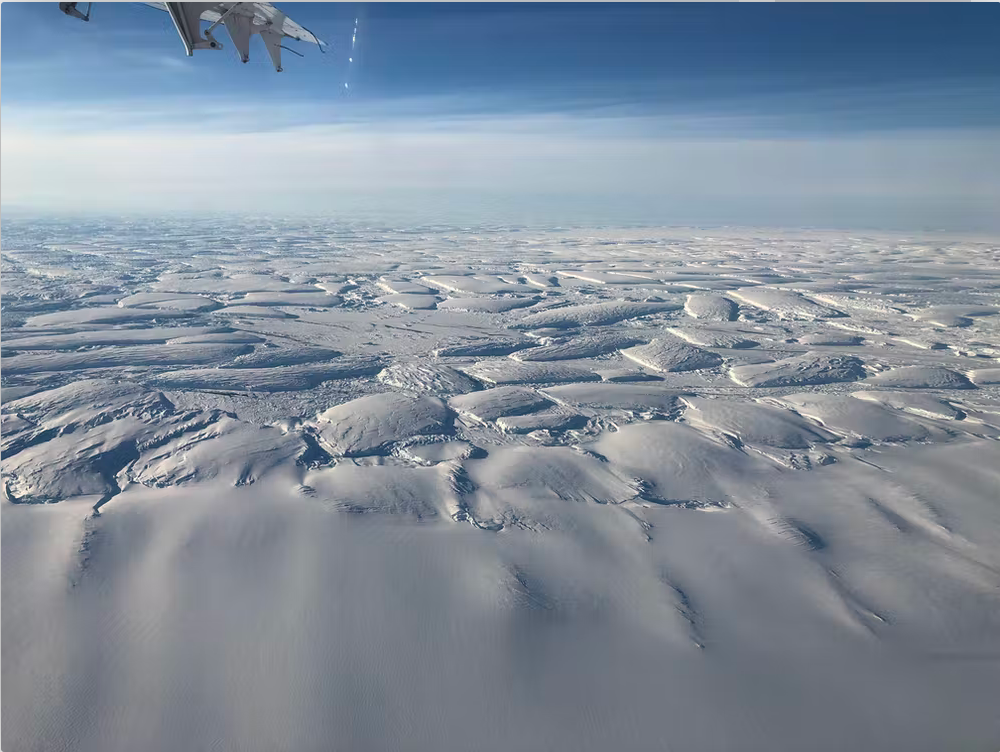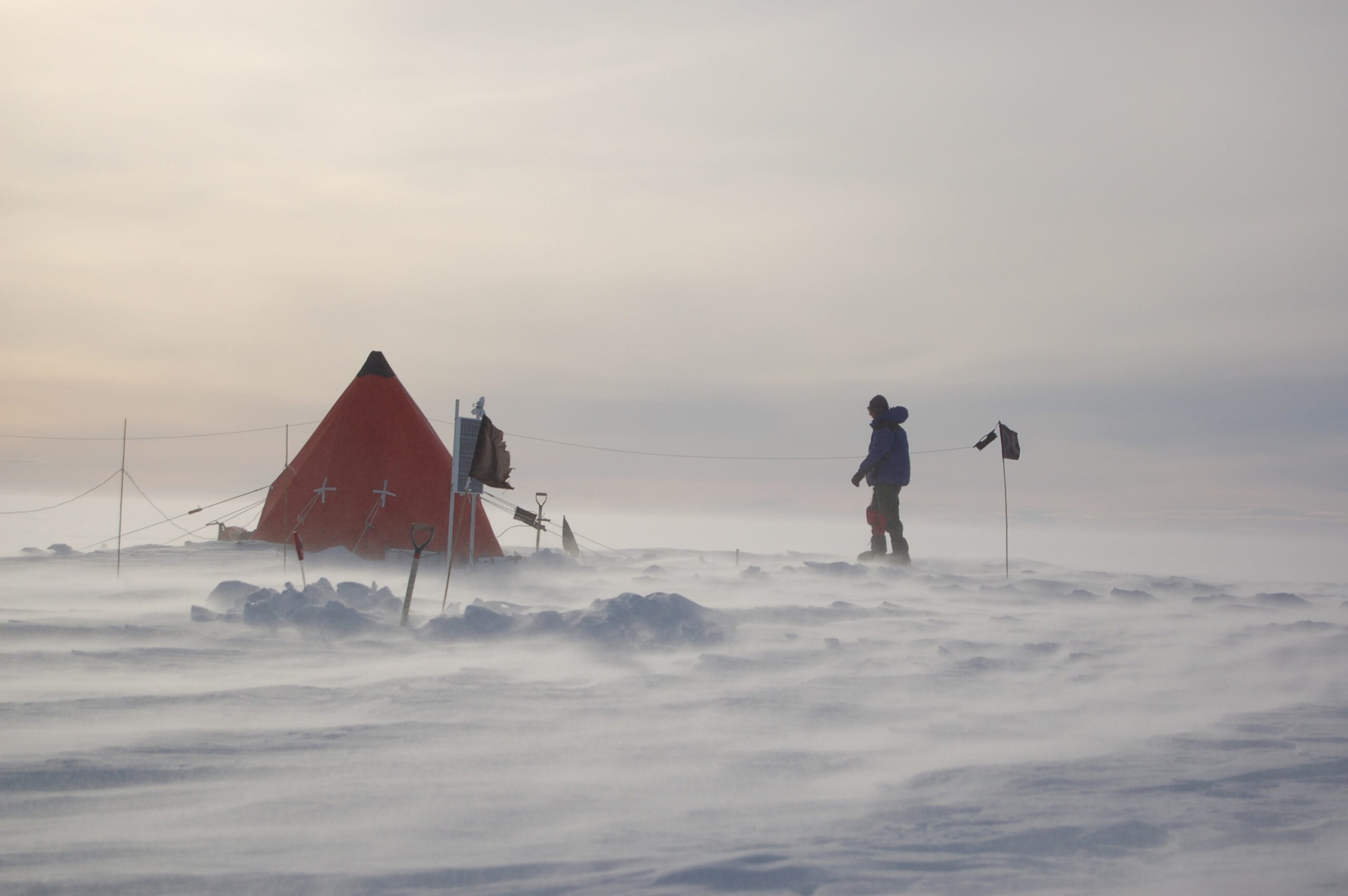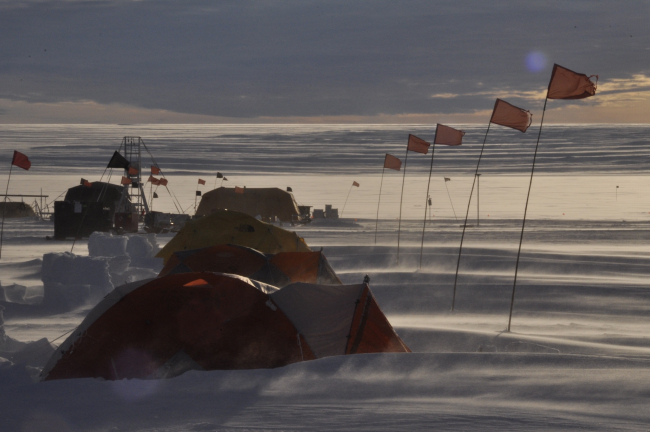A new study, involving researchers from British Antarctic Survey, has found that significant thinning and retreat of the vast Thwaites Glacier began in the 1940s.
Accelerating ice loss has been observed since the 1970s, but its unclear when this significant melting initiated – until now. These results coincide with previous work that found the Pine Island Glacier also began its retreat at this time. Climate models indicate that anthropogenic warming has increasingly driven West Antarctic ice loss since that time, and has prevented these glaciers from recovering.
James Smith, a marine geologist at British Antarctic Survey said:
"Our previous work in 2016 provided the first direct evidence that neighbouring Pine Island Glacier started to retreat in the 1940s. However, that was just one glacier draining into the huge Amundsen Sea Embayment. Now that we know Thwaites glacier also started to retreat around the same time is really significant. It demonstrates that glaciers in this area were responding synchronously to an external climatic driver."
"A significant implication of our findings is that once an ice sheet retreat is set in motion it can continue for decades, even if what started it gets no worse. It is possible that the changes we see today on Thwaites and Pine Island glaciers – and potentially across the entire Amundsen Sea Embayment – were essentially set in motion in the 1940s."
Rachel Clark, lead author, said:
"What is especially important about our study is that this change is not random nor specific to one glacier. It is part of a larger context of a changing climate. You just can't ignore what's happening on this glacier."

Clark and the study authors posit that the glacial retreat was likely kicked off by an extreme El Niño climate pattern that warmed the west Antarctic region. Since then, the authors say, the glacier has not recovered and is currently contributing to 4% of global sea-level rise.
"It is significant that El Niño only lasted a couple of years, but the two glaciers, Thwaites and Pine Island, remain in significant retreat. Once the system is kicked out of balance, the retreat is ongoing," said corresponding author Julia Wellner, U.S. lead investigator of the Thwaites Offshore Research project, or THOR, an international collaboration whose team members are authors of the study.
Their findings also make it clear the retreat at the glaciers' grounding zone, or the area where the glaciers lose contact with the seabed and start to float, was due to external factors.
Claus-Dieter Hillenbrand, U.K. lead investigator of THOR and study co-author at British Antarctic Survey said:
"The finding that both Thwaites Glacier and Pine Island Glacier share a common history of thinning and retreat corroborates the view that ice loss in the Amundsen Sea sector of the West Antarctic ice sheet is predominantly controlled by external factors, involving changes in ocean and atmosphere circulation, rather than internal glacier dynamics or local changes, such as melting at the glacier bed or snow accumulation on the glacier surface."

Dating of sediment cores plays key role in study
Wellner and the THOR team used three primary methods to reach their conclusion. One of those methods was marine sediment core collection that was closer to the Thwaites Glacier than ever before. They retrieved the cores during their trip to the Amundsen Sea near Thwaites in early 2019 aboard the Nathaniel B. Palmer icebreaker and research vessel. The researchers then used the cores to reconstruct the glacier's history from the early Holocene epoch to the present. The Holocene is the current geological epoch that began after the last ice age, roughly 11,700 years ago.
Computed tomography scans were used to take x-rays of the sediment to gather details from its history. Geochronology, or the science of dating earth materials, was then used to reach the conclusion that significant ice melt began in the '40s.
Clark used 210Pb (lead-210), an isotope that's naturally buried in the seafloor sediments and is radioactive, as the most important isotope in her geochronology. This process is similar to radiocarbon dating, which measures the age of organic materials as far back as 60,000 years.
"But lead-210 has a short half-life of about 20 years, whereas something like radiocarbon has a half-life of about 5,000 years," Clark said. "That short half-life allows us to build a detailed timeline for the past century."
This methodology is important because although satellite data exists to help scientists understand glacial retreat, these observations only go as far back as a few decades, a time frame that is too short to determine how Thwaites responds to ocean and atmosphere changes. Pre-satellite records are needed for scientists to understand the glacier's longer-term history, which is why sediment cores are used.

Study informs future modelling to reduce uncertainty of sea-level rise
Thwaites Glacier plays a vital role in regulating the West Antarctic ice sheet stability and, thus, global sea-level rise, according to Antarctic researchers.
"The glacier is significant not only because of its contribution to sea-level rise but because it is acting as a cork in the bottle holding back a broader area of ice behind it," Wellner said. "If Thwaites is destabilized, then there's potential for all the ice in West Antarctica to become destabilized."
If Thwaites Glacier were to collapse entirely, global sea levels are predicted to rise by more than 60cm.
"Our study helps to better understand what factors are most critical in driving thinning and retreat of glaciers draining the West Antarctic ice sheet into the Amundsen Sea," Hillenbrand said. "Therefore, our results will improve numerical models that attempt to predict the magnitude and rate of future Antarctic ice sheet melting and its contributions to sea levels."
Researchers with THOR are part of an even larger initiative, the International Thwaites Glacier Collaboration, a joint U.S.-U.K. partnership to reduce uncertainty in the projection of sea-level rise from Thwaites Glacier.






